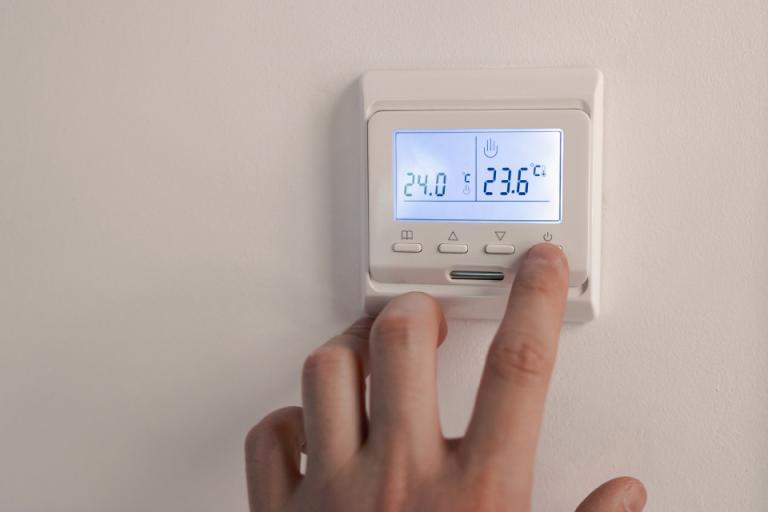Our new AI assistant:
We're trialling an AI assistant on this page. Want to ask a question about our environmental services, including bins and recycling? Click 'Ask Croydon Council' to get started.
Heating and appliance controls, such as timers, thermostats, and radiator valves, help you to stay comfortable in your home while conserving energy.

Many central heating systems, like boilers and heat pumps, have timers that allow you to schedule your heating. You can use these controls to heat only the areas you need, saving energy and reducing costs.
Thermostatic radiator valves let you set different temperatures for each room. For example, you can keep the downstairs warmer if that’s where you spend most of your time.
During winter, avoid turning off your radiators completely - as this can cause dampness and mould to form when they are switched back on.
Energy Advice London has advice on staying in control of your heating.
The Energy Saving Trust has useful tips on how to get the most out of your heating system to conserve energy and save on bills.
The Centre of Sustainable Energy provides detailed central heating information on how to save energy and money.
Older homes often have draughts that let warm air escape, leading to discomfort and higher energy bills.
Air leaks can occur through gaps around windows, doors, pipes, floorboards, and other areas – making your home harder to heat in winter and cool in summer.
To reduce heat loss and improve energy efficiency, you can:
Do not block essential ventilation, such as air bricks, boiler flues, or trickle vents.
Make sure that kitchens and bathrooms are well ventilated to prevent damp.
Cost: Less than £500
The Energy Saving Trust and Historic England have draught proofing guides to save energy and money.
When purchasing new appliances such as fridges, washing machines or ovens, choose energy-efficient models. These products are rated from A (most efficient) to G (least efficient).
Lighting accounts for 15% of a typical UK household’s electricity bill, so switching to LED light bulbs can help lower costs.
Cost: Less than £500
The Energy Saving Trust has a useful guide to energy efficient lighting to help you lower electricity bills and carbon dioxide emissions, including getting the best out of your LED lighting.
Also, The Centre of Sustainable Energy has tips on which energy saving lightbulbs to use for your lighting needs.
Insulating your pipes, hot water tank, and radiators is a quick and low-cost way to save money on your energy bills.
To insulate your pipes: Use foam tubes that fit around any exposed pipes carrying hot water. This helps keep the water warm and reduces the risk of pipes freezing.
Cost: Less than £500
If you have a hot water tank in your home, you can purchase an insulating jacket from DIY shops to fit around the tank.
This works in the same way as the pipe insulation in that it helps to prevent heat loss from the tank and save on energy. An 80mm jacket is recommended by British Standards.
Cost: Less than £500
For radiators fitted on external walls in your home, installing reflector panels behind the radiator will help to stop heat loss through the wall and reflect the heat back into the room. These are particularly helpful for homes with uninsulated solid walls.
Cost: Less than £500
Heating water in your home can consume a great deal of energy. You can reduce hot water use by fitting regulators to taps or installing water-efficient showerheads.
In the UK, one of the best ways to re-use rainwater is by installing a water butt connected to your downpipe.
This allows you to collect rainwater for gardening or washing your car, reducing your reliance on mains water.
Cost: Less than £500
The Energy Saving Trust has easy to use tips to save water use in your home.
The Centre of Alternative Technology provides practical advice and tips for reusing rainwater and greywater.
NEW Help improve this site by giving feedback Show Hide
Send feedback directly to the content team using our website feedback form
You can also join our user research group to receive invites to activities and surveys to help shape future improvements to the site.